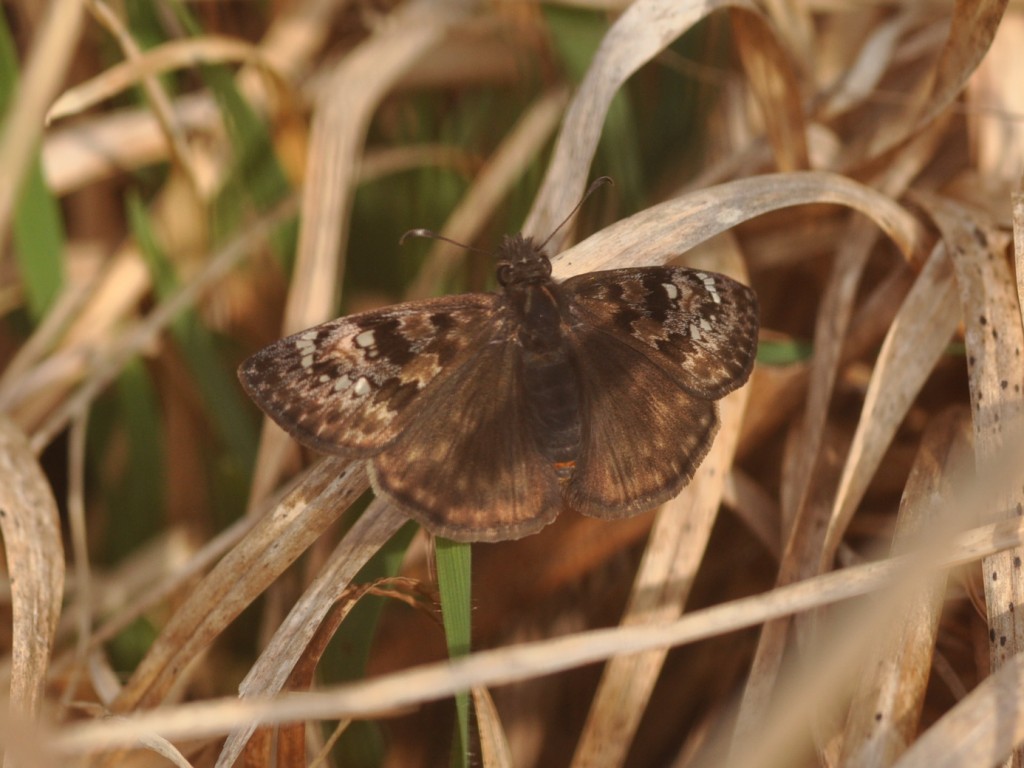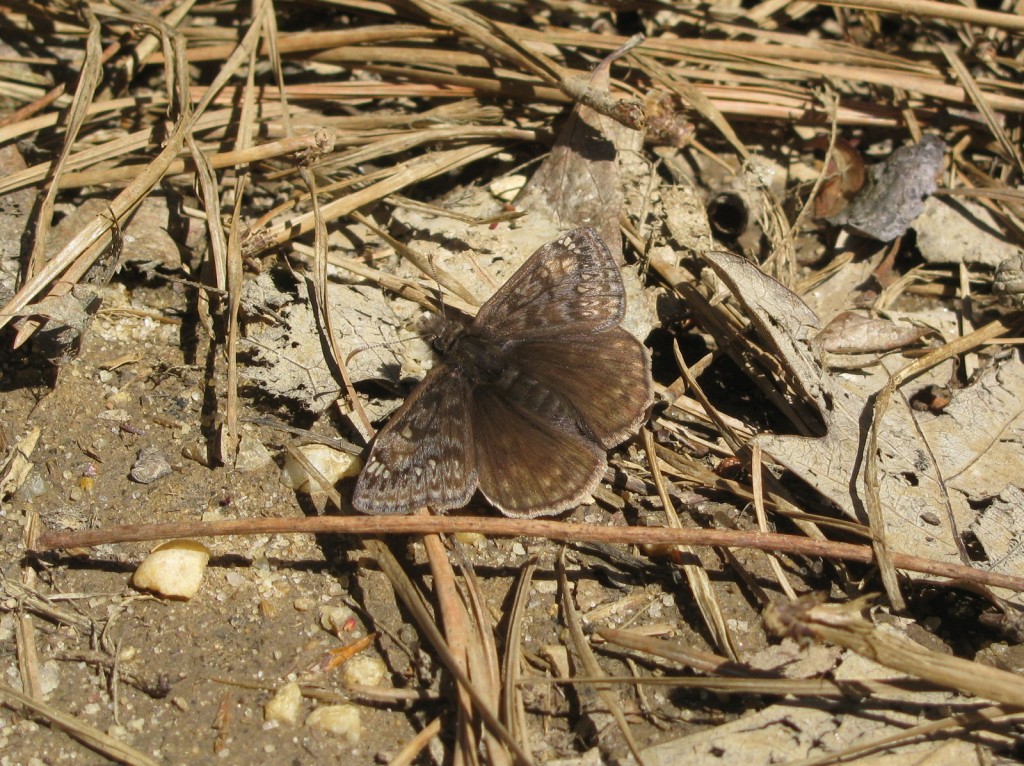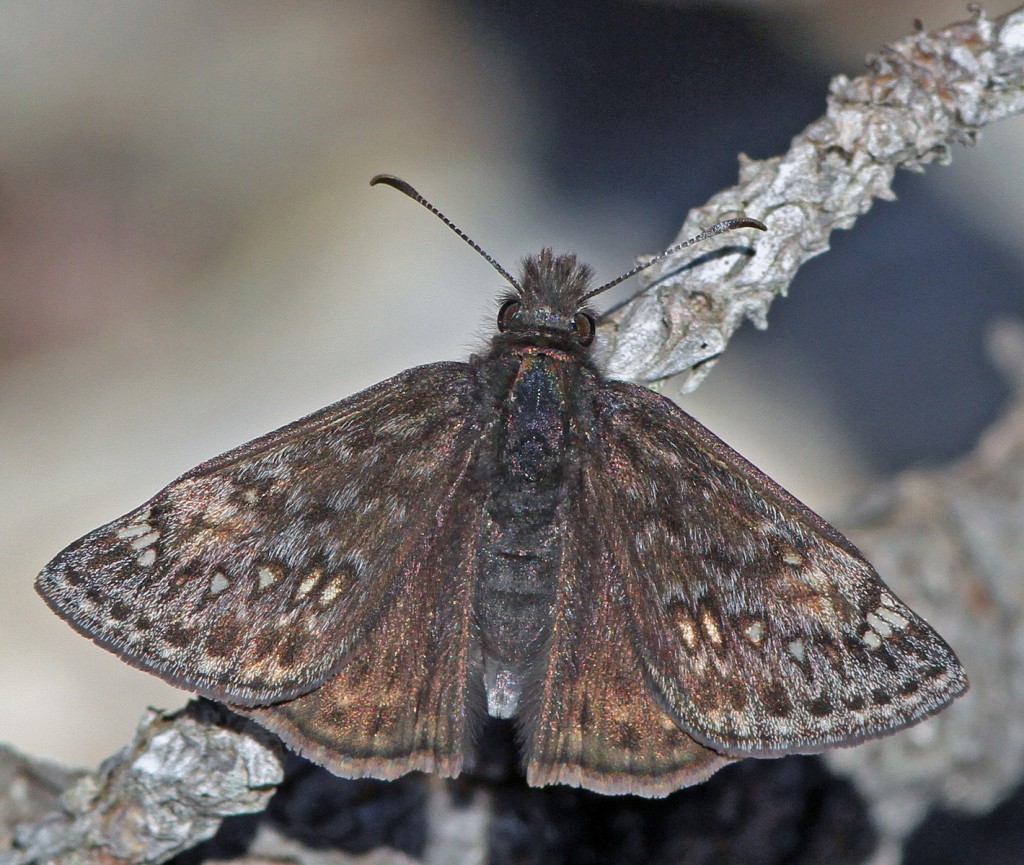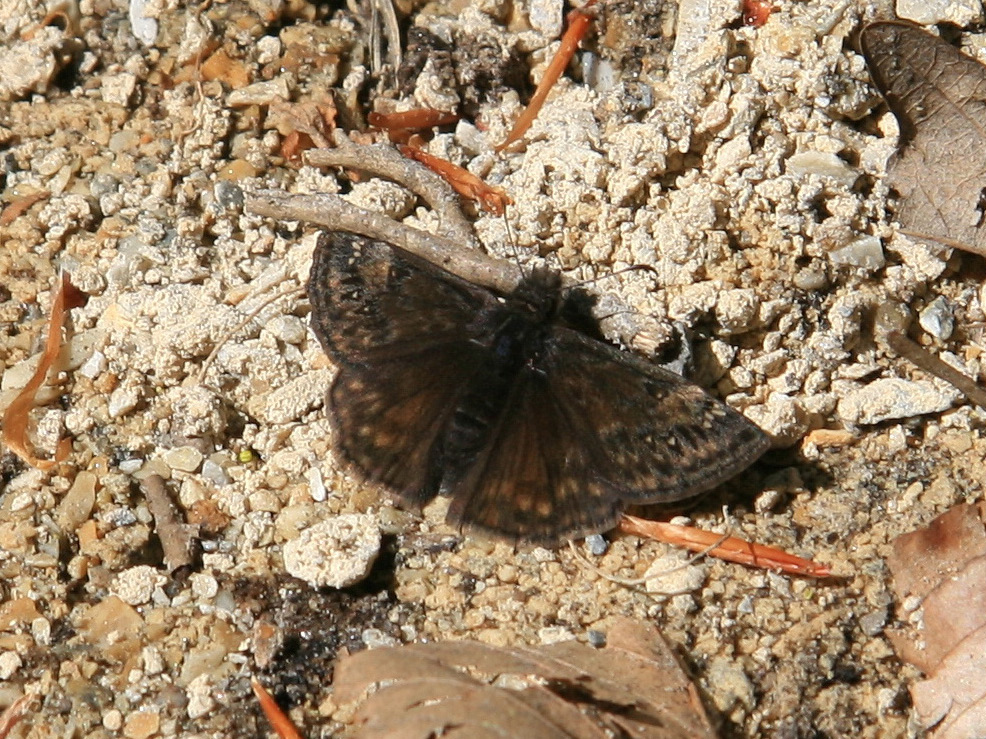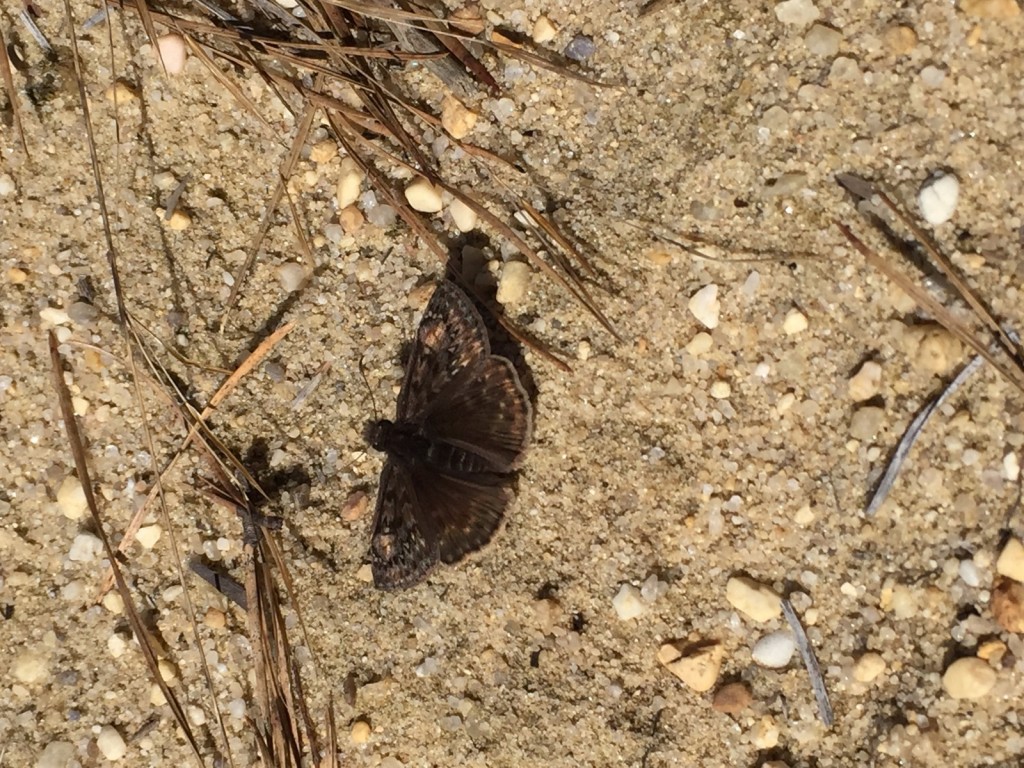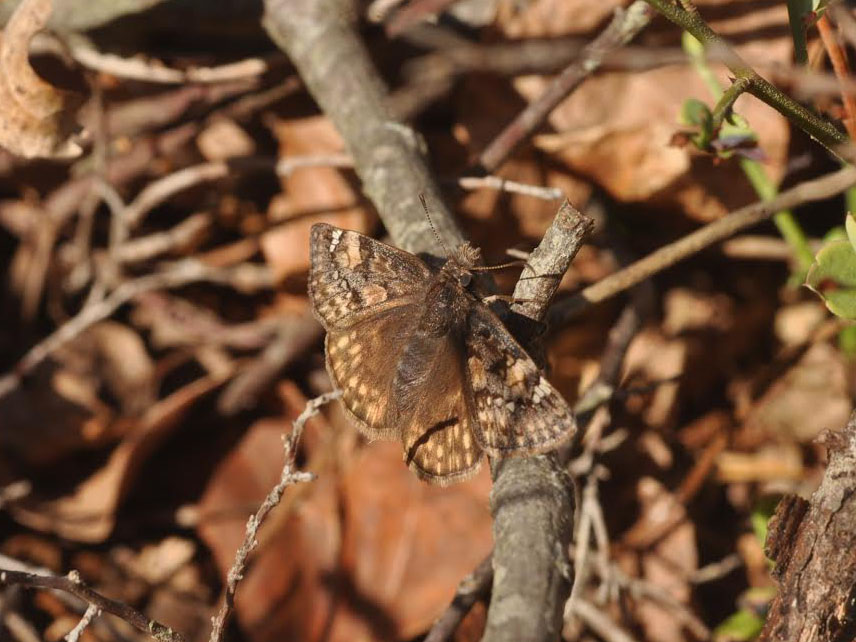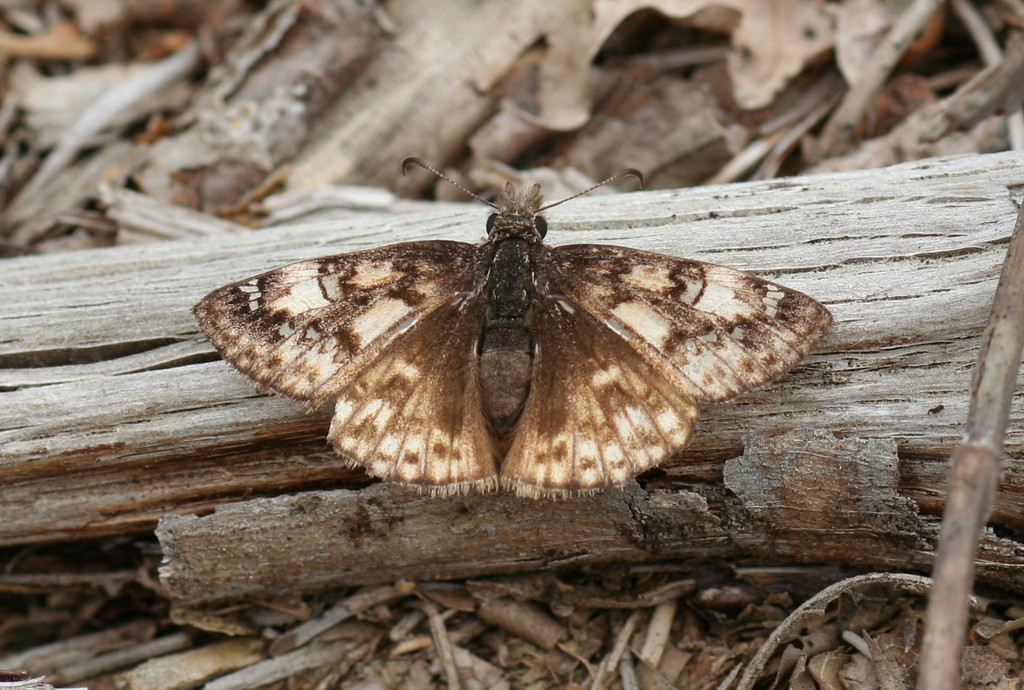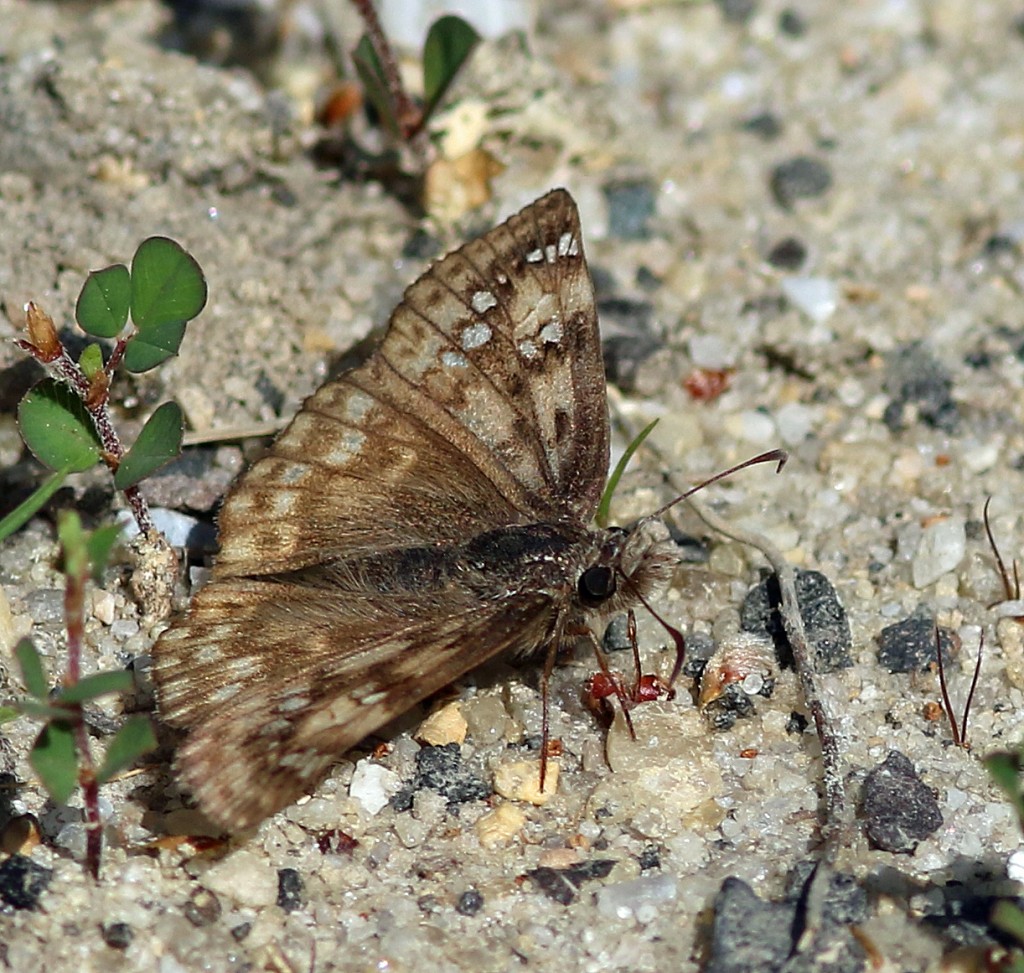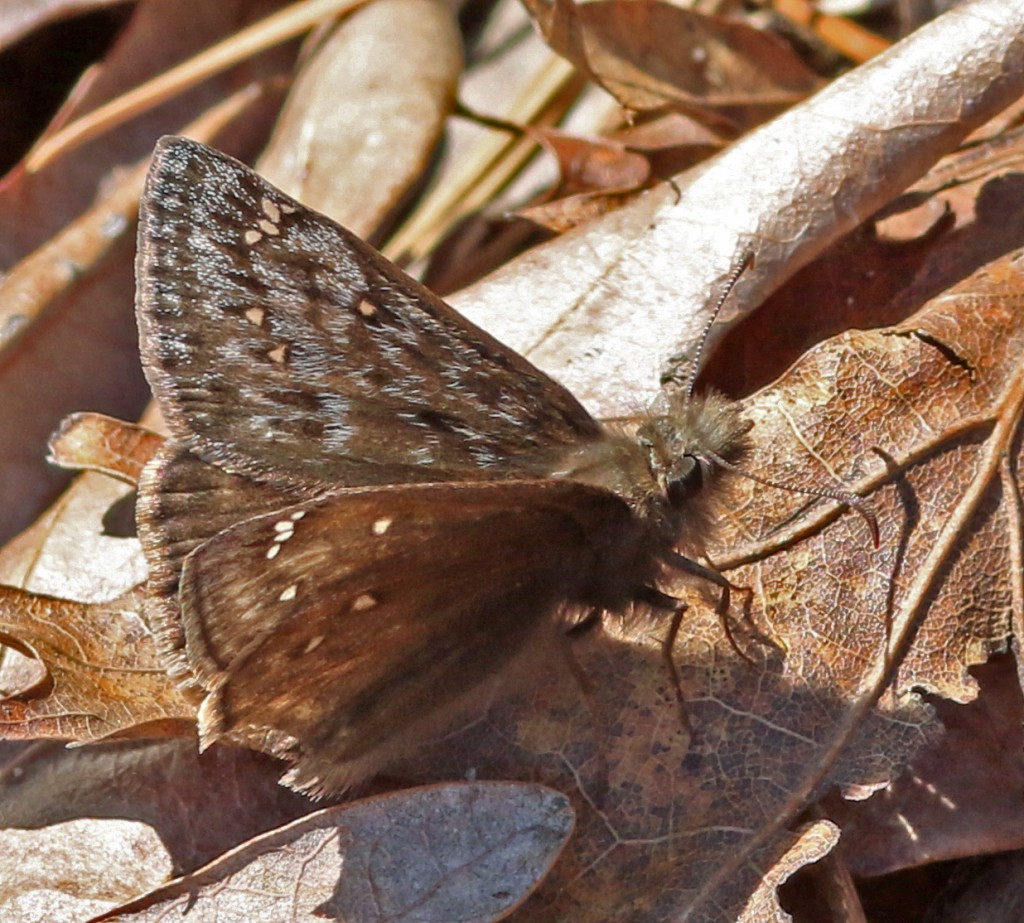
Duskywing Easy Warm-Up. If you can tell whether this is a Juvenal’s or a Horace’s, you might be ready for the Challenges below! Photo taken 4-8-16.
Last week’s request for duskywing shots for a Photo Forum on Juvenal’s vs. Horace’s brought in more than a dozen shots. Thanks to each of you who contributed.
However, no one sent in details of which features had led to the identifications — and a couple of contributors chose to send photos that had baffled them. “I’d be interested to hear what the experts say about this one,” one noted.
That seems a sentiment most of us have felt, “I wish someone would tell me which duskywing I have photo’d here.”
The truth is most of us realize that separating South Jersey’s two most common duskywings is tough. And I am betting all of us would like to sharpen our abilities to identify them, especially March-May when both fly.
So, the format of this Photo Forum has changed a little.
Let’s start with a review of the distinctions most often mentioned by field guides and other sources:
The Two Dots: Juvenal’s usually (“almost always,” says Glassberg) show two dots just below the leading edge (“sub-apical”) of the ventral hind wing. Horace’s never do.
If you see the two dots, it’s a Juvenal’s.
Seasonality. Juvenal’s are a single-brooded, spring species, flying in our area from early April to late May or sometimes very early June (apparently); Horace’s are double-brooded, flying April (start of first brood) to September (end of second brood).
If you come upon a duskywing in South Jersey after mid-June (and can eliminate wild indigo duskywing, another ID challenge), you can call it a Horace’s with confidence.
Sexual Dimorphism: Horace’s shows a wider range of differences between male and female, so its sexes occupy the ends of the spectrum of the four forms of the two species. From least-patterned to most-patterned the spectrum goes: Horace’s male, Juvenal’s male, Juvenal’s female, Horace’s female.
Cech & Tudor: Horace’s males are “mostly dark blackish-brown.” Brock & Kaufmann: “Horace’s males are often plainer and browner above [than Juvenal’s males].” Glassberg: “Horace’s females are more mottled than Juvenal’s females.”
Gray Overscaling: Fresh Juvenal’s males sometimes (usually?) show prominent gray or white hairs on the fore wing, a feature less noticeable or absent on the FW of the Horace’s male — or on either female.
Size of Upper FW Spots: Horace’s female has larger spots on outer area of forewing, than Juvenal’s female, say some sources, e.g. Cech & Tudor: “note extremely prominent glassy hyaline spots [on Horace’s female].”
The “Face”: Horace’s palps (“face”) can be white (Cech & Tudor: “[Horace’s] often snowy white vs. darker or entirely dark in Juvenal’s, but this trait can vary”).
The White Eye-ring: Horace’s can show a white eye ring not seen on Juvenal’s.
Ok, there are the most frequently noted differences “by the book.” How helpful are these features in the real world outdoors in the field…or even back home indoors when looking at still photos?
“Duskywings give me a headache,” one observer noted. Another wrote, “The duskywings make my eyes hurt – I wish they wouldn’t be so similar to one another.”
A third observer passed along a quick comment from a veteran lepidopterist, who has changed his mind about the distinctions between the two species — after many years of work in the field and in the lab:
“I’ve become very cautious when attempting to differentiate Horace’s from Juvenal’s in the field…. At one time I believed they could be separated by Horace’s slightly larger size and a tendency to be darker and more contrasty than Juvenal’s. But over the years, after examining hundreds of museum specimens and even more in the field, I’m [now] convinced this does not work. The degree of phenotypic overlap is far too great. The only character that works [are the] two pale apical spots on the ventral hindwing of Juvenal’s.. . Nowadays, I routinely try for at least one good ventral photo when shooting a series … but this can be difficult. In the end it often faster to net the individual and examine it in a clear vial, then release.”
One reason for our head aches and eye aches with these two is that none of the distinctions is universally reliable (and several are questioned or contradicted by other sources).
“But this trait can vary” seems to apply to every one of the Juvenal’s/Horace’s field marks.
Even the Juvenal’s two dots, universally regarded as the best mark, can be hard to see (and harder to photo), and can be impossible to see on s0me Juv males — when the dots can be black or absent.
But wait, let’s not give up! What fun would that be?
Instead, let’s put our wisdom and experience together and see if we can “group-think” to find some ways to be sharper observers of these two tough look-alikes.
Which of the duskywings in the nine numbered photos here do you feel you can identify — and why? You can “Leave a Comment” at the bottom of this post, or you can email me (nacotejackATgmailDOTcom) with your thoughts. No need to try them all! Just choose those you think you can identify and explain what you see that helps you.
If I have left out a mark you find useful from the bold-face list of distinctions, please note that.
Once I have some responses, I will update this post with the answers given.
Again: Identifying all of them is not required. Choose those you feel you can name.
However, you must give reasons for your ID, not just name the species. We want to learn from each other.
If you email me your analysis, I will quote you anonymously — unless you tell me to include your name.
No one will be graded! Who could claim to know all the answers?
I have left out site and photographer for the ten photos (including the warm-up), so there will be no extra hints. All were taken in our area (the southern eight counties of NJ), March-May, when both species fly. They are arranged in seasonal sequence. The photographers are listed at the bottom of this post.
I hope to hear from some of you! I hope it will help you review your own know-how and I am sure that, if you explain your thoughts, you will helping out the rest of us.
Thanks in advance to all who are brave enough to try this!
— Jack Connor
Sources quoted:
Rick Cech & Guy Tudor, Butterflies of The East Coast (Princeton University Press, 2005).
Jeffrey Glassberg, Butterflies Through Binoculars: The East (Oxford University Press, 1999)
Jim P. Brock & Kenn Kaufman, Butterflies Of North America (Houghton Mifflin, 2003).
More on the Web:
For photos and details at the excellent North Jersey NABA site, go here:
North Jersey NABA: Juvenal’s Duskywing
North Jersey NABA: Horace’s duskywing
Photo Contributors (in alpha order, not photo order)
Tom Bailey, Jennifer Bulava, Jack Connor, Steve Glynn, Will Kerling, and Harvey Tomlinson. Thanks to each of them for their contributions to the Challenge.
— jc
Update 4/21/16:
Only one observer has taken on the duskywing challenge so far: Sandra Keller. Thank you, Sandra!
I am saving her IDs and comments until we hear from another observer or two.
Meanwhile, Jack Miller has provided the following photo of a possible Horace’s on Ackley and Whitehead Road in CUM on 4-18-16 (see our Sightings Log):
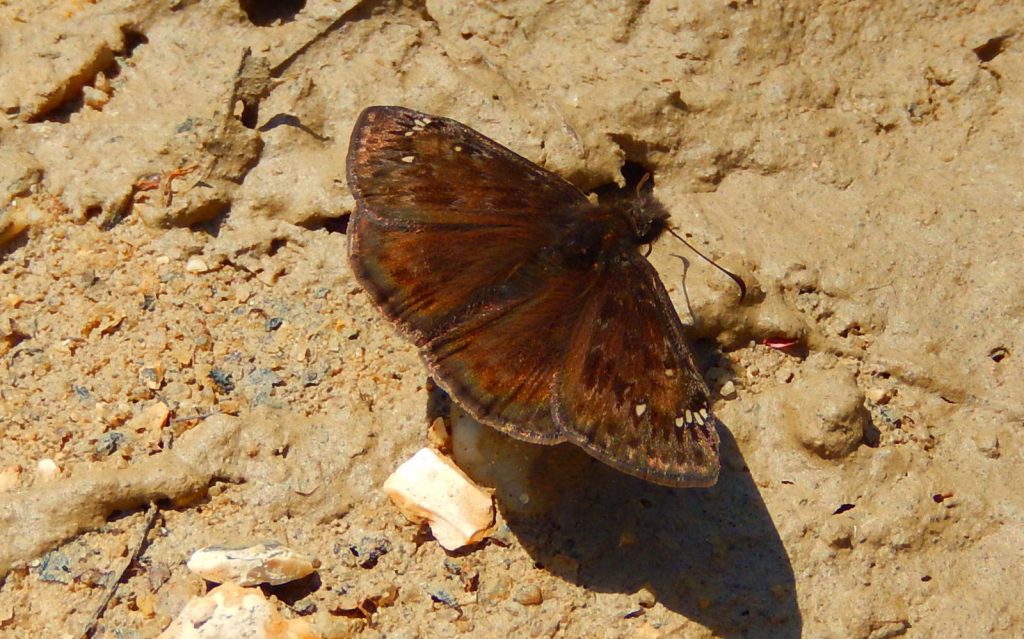
Possible male Horace’s: lack of overall patterning, brownish undertones on dorsal, lack of gray over-streaking in forewings…and Jack Miller and Clay Sutton believe this is the duskywing they spotted among half a dozen Juvenal’s that lacked the two ventral spots.
Dave Amadio’s comment, 4-20-16: “Looks like Horace’s to me. Lack of gray scaling & the description of missing ventral spots would strongly suggest Horace’s.”

